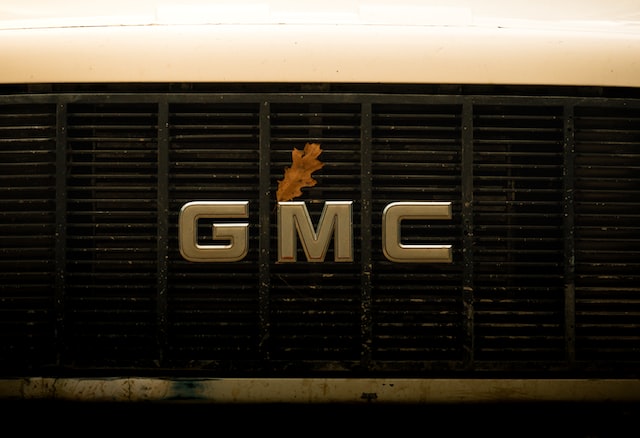The predecessor of General Motors was the Buick Motor Company, founded by David Buick in 1903. In 1908 William C. Durant, the largest coachbuilder in the United States, bought the Buick Motor Company and became its general manager, at the same time as the Model C was introduced. To market the car, Durant quickly built up a distribution network and attracted large orders - well beyond the company's production capacity. By 1908, Buick had become the leading car manufacturer in the United States and Durant was keen to end the coexistence of hundreds of companies in the industry, so he strongly supported Benjamin Crisco's proposal to merge several major car companies, including Buick, Ford, Maxwell Briscoe and Olds, but negotiations failed when Ford demanded $8 The negotiations ended in failure due to Ford's huge $8 million price tag. In the same year, Durant formed an automobile holding company, General Motors (GM), based on Buick and Olds, and in 1909 merged two other car companies, Oakland Motor Company and Cadillac Motor Company. .

For over a century, GM and its products have touched the lives of countless consumers around the world. One hundred years of innovation and development, from its most unpromising beginnings on September 16, 1908 to Alfred Sloan's famous "different wallets, different goals, different models" strategy; from the world's first production sports car to the first car with a fuel efficiency of 3.53 litres of fuel per 100 kilometres (80 mpg). From the acquisition of world-famous car brands such as Chevrolet, Opel and Vauxhall to today's focus on new 'green' power propulsion technologies, GM has grown in markets far beyond the company's birthplace.
Growth and development
The founding and expansion of the company, 1897-1909
When America's first automobile show was held in New York in 1900, the average American was less than 50 years old; less than 15 per cent of households had bathtubs; and there were fewer than 8,000 cars in the country.

But more than 300 new models were displayed at that show, attracting more than 50,000 consumers to buy them. As the automobile had become a dream for the general public, more than 100 different emerging American companies soon entered the fray - and two-thirds of the cars they produced were powered by steam or electricity.
Although the newspapers of the time did not pay much attention to General Motors, which was born on 16 September 1908, within less than two years it had acquired more than 20 companies and was one of the most highly rated companies on Wall Street. Under the GM banner, the Buick, Oldsmobile, Cadillac and Oakland (later renamed Pontiac) brands soon became household names, and their operations extended far beyond their birthplace in Flint, Michigan.
In continental Europe, where the world's first working internal combustion engine was built in 1876 and the first car in 1885, the German company Adam Opel, which originally made sewing machines and bicycles, also went into the car business; at the same time, the British company Vauxhall also began producing cars.
In 1908, General Motors was born.
At Durant's insistence, General Motors was founded on 16 September 1908. Its initial assets, including only Durant's Buick Motor Company, did not attract much public and press attention until the White Star Line announced that GM would begin building the Titanic, the world's largest ocean liner, and GM really began to influence the industry.
From 1910-1929, the automotive industry accelerated
A number of early inventions opened up new possibilities and dreams for people around the world, such as the electric light, the telephone, the radio and the automobile. Due to the unprecedented expansion of demand for cars in the 1920s, GM had to accelerate the pace of product and marketing changes.

GM was first distinguished by the electronic starter, invented by the famous inventor and researcher Charles "Boss" Kettering, who applied the invention to Cadillac in 1912. The introduction of the electronic starter is still recognised as the most influential automotive innovation of the twentieth century.
A few years later, General Motors Financial Services Corporation (GMAC) pioneered a new business model called retail finance.
With the introduction of the 1927 LaSalle, the first design by the famous designer Harley Earl (the father of automotive design), GM entered a new era in which the car was no longer just a means of transport.
By adopting the famous "different wallets, different targets, different models" business strategy, GM's brand image and car products have become a representation of consumers' self-worth and status.

With the acquisition of the Chevrolet, Vauxhall and Opel brands in 1918, 1925 and 1929, GM owned more makes and models of cars than any other automaker. In less than a decade, the company had opened new assembly plants in more than a dozen countries, including China, Japan and India.
By this time, GM had become a global company.
1930-1959, a time of passion
Throughout the 1930s, the Great Depression in the United States and political changes in Europe brought unrest around the world, but GM's quest for innovation was as strong as ever. With the end of World War II and the advent of peacetime, consumers were hungry for goods that had been in short supply for a long time. With landmark designs, GM responded quickly and has continued in this spirit ever since.
In addition to innovations such as the independent front-wheel suspension monocoque and the monolithic steel roof, GM applied the new design to a series of newly introduced cars, including the 1949 Buick Roadmaster, the Chevrolet Corvette with BelAir and the 1959 Cadillac El Dorado. models that were as pleasing to the eye as they were fun to drive.
During the war, GM supplied far more goods to the Allies than any other company, and in 1940, former GM president William Knudsen was appointed by President Roosevelt to chair the new Office of Wartime Production Management. By 1942, GM was producing 100 per cent of what the Allies needed for the war effort. During this period, GM supplied over $12 billion worth of materials, including aircraft, trucks and tanks.

1960-1979, a time of great change
The 1960s and 1970s were a time of new challenges and great change. Environmental concerns, price increases and increased competition from overseas prompted GM to revamp all its products as never before, and cars became smaller. This was the largest engineering re-engineering project ever undertaken by the automotive industry, leading the way to an era of light weight, aerodynamics and high fuel economy.
In 1971, GM pioneered the development of engines that could run on low-lead or unleaded gasoline. Two years later, GM was the first to equip production cars with airbags, and in 1974, with the catalytic exhaust cleaning system, GM took its most important step in reducing emissions. This technology, shared by GM, is still commonly used throughout the automotive industry.
But the horizon was already cloudy. Germany and Japan recovered from the ashes of World War II and began exporting cars to the United States in large quantities. Soaring fuel prices spurred huge consumer interest in these new fuel-efficient cars. In a rush, General Motors also embarked on the development of smaller cars. But the company was too big and too successful for this change to happen overnight. As a result, GM's undisputed control of the US market began to be threatened.
1980-1999, the pace of globalisation
General Motors has always been active in internationalisation. In the 1980s and 1990s, in response to the new challenges of globalisation, to improve operational efficiency and to better compete with global competitors, GM undertook a series of reorganisations in North America, culminating in the consolidation of its businesses into one business unit.
In 1982, a new plant opened in Zaragoza, Spain, marking the start of GM's production expansion outside the North American market. The plant went into production of the fuel-efficient Opel Corsa immediately after opening, and with the start-up of joint ventures in China and India, and the addition of the Saab and Hummer brands to the GM family, the company matched its wings in terms of coverage and diversity of vehicles sold.

1995 was an unusual year for GM. It was the first year that vehicle sales outside the North American market exceeded three million units. A total of five million vehicles were sold in the US market that year. At the same time GM signed its first joint venture agreement with China. By the end of the nineties, the foundations for GM's global growth in the new century were laid.
During this period, GM also formed the NUMMI joint venture with Toyota. At the same time the Saturn division was established, a new company that focused on the production of new small cars and pioneered a new business model. The experience gained from these innovations was quickly spread throughout GM. At the same time, the company benefited from a boom in trucks, with millions of American families choosing SUVs as a means of transport. However, the historical baggage of the early years continued to constrain the company's progress. In most passenger car segments, Japanese, German and Korean rivals held the lead.
2000-2008, innovation and challenges
As the new millennium dawned, GM took market initiative in emerging markets such as China and Brazil, essentially completing its transformation into a global company. 2002 saw the creation of GM Daewoo Motors, which provided GM with a new organisation specialising in small car manufacturing, adding momentum to the global growth of the Chevrolet brand, and the design and quality of new GM models were effectively enhanced. But again, the company found it difficult to take market share from its overseas competitors. Decades of historical baggage accumulated as a large, inefficient company continued to drag down the company's financial figures.
At the same time, this was a period of surging innovation for GM. The company continued to advance electric vehicle technology with the development of a series of hydrogen-powered fuel cell concepts and showcases, and in January 2007, GM debuted the Chevrolet Volt Volt concept to the world and sent shockwaves throughout the automotive industry. the Volt Volt could rely on battery power for intercity transportation and switch to extended range mode to complete its range when the battery power was depleted. The first Volt Volt was delivered to consumers in December 2010. Meanwhile, GM has become an industry leader in the development of flexible-fuel vehicles that can be powered by either gasoline or E85, developing a sophisticated two-mode hybrid system that effectively improves fuel economy for large trucks and SUVs.
Major new models include the Chevrolet Aveo minivan, Chevrolet Equinox crossover and Pontiac Solstice and Saturn Sky roadster. the all-new Saturn Aura and Chevrolet Maserati bring GM back into the midsize car fray. The Cadillac CTS, on the other hand, started the Cadillac renaissance and became a strong driver of growth.

The 2008 recession and global credit crisis pushed car sales to the brink of recession and depleted private capital. Severely short of liquidity, GM obtained a bridge loan from the US Treasury. Under the terms of the loan, the company was expected to accelerate a difficult restructuring of its US operations. This process, however, had been going on for years before.
Bankruptcy restructuring in 2009
A formal bankruptcy petition under Chapter 11 of the US Bankruptcy Code was filed with the New York Bankruptcy Court at 8pm local time on 1 June 2009. General Motors, founded in 1908, will become the third largest US company and the first manufacturing company to file for bankruptcy under Chapter 11 of the US Bankruptcy Code, and the second largest company in terms of number of employees involved in bankruptcy. At the same time, this is another global auto giant bankruptcy in the US auto industry after Chrysler filed for bankruptcy protection.
Back on Wall Street in 2010
General Motors CEO Akerson
On 18 November 2010, General Motors, which had been delisted a year and a half earlier, returned to Wall Street.
A year and a half after GM filed for Chapter 11 bankruptcy, the company was reformed and streamlined, the new company went public and its stock rose sharply, a huge turnaround for a company that had needed $50 billion in emergency loans from the US government and other governments to weather the consequences of the economic downturn and its own failures.
General Motors in 2012
In 2012, GM sold 9,285,991 vehicles worldwide, ranking second only to Toyota Motor Group, and in 2012, GM reported net income of US$4.9 billion on revenues of US$152.3 billion, the third consecutive year of profitability following its bankruptcy. In particular, GM's performance in its two most important global markets, the United States and China, was very strong.
On 4 January 2016, GM announced that the company's Board of Directors had voted unanimously to appoint Chief Executive Officer Mary Barra to also serve as Chairman, with the appointment effective immediately. It was ranked 18th on the 2017 Fortune 500 USA list released on 7 June 2017. on 19 July 2018, the Fortune 500 list was released and GM was ranked 21st.
Lunar rover in 2021
On 26 May 2021, General Motors announced that it will work with Lockheed Martin to develop an autonomous driving electric off-road lunar vehicle.
Car battery plant
On 24 January 2022, American Motors announced that it will spend $7 billion (approximately $44.28 billion) to build an automotive battery plant in Michigan and refurbish an existing plant outside Detroit to begin production of electric pickup trucks by 2024.
In 2022, LG Energy Solution and General Motors (GM) plan to build a fourth joint venture battery plant in the US this year.

Partnership with Honda announced
On 6 April 2022, GM and Honda announced a partnership that will see them develop a number of low-cost electric vehicles based on a new platform, with mass production starting in 2027.